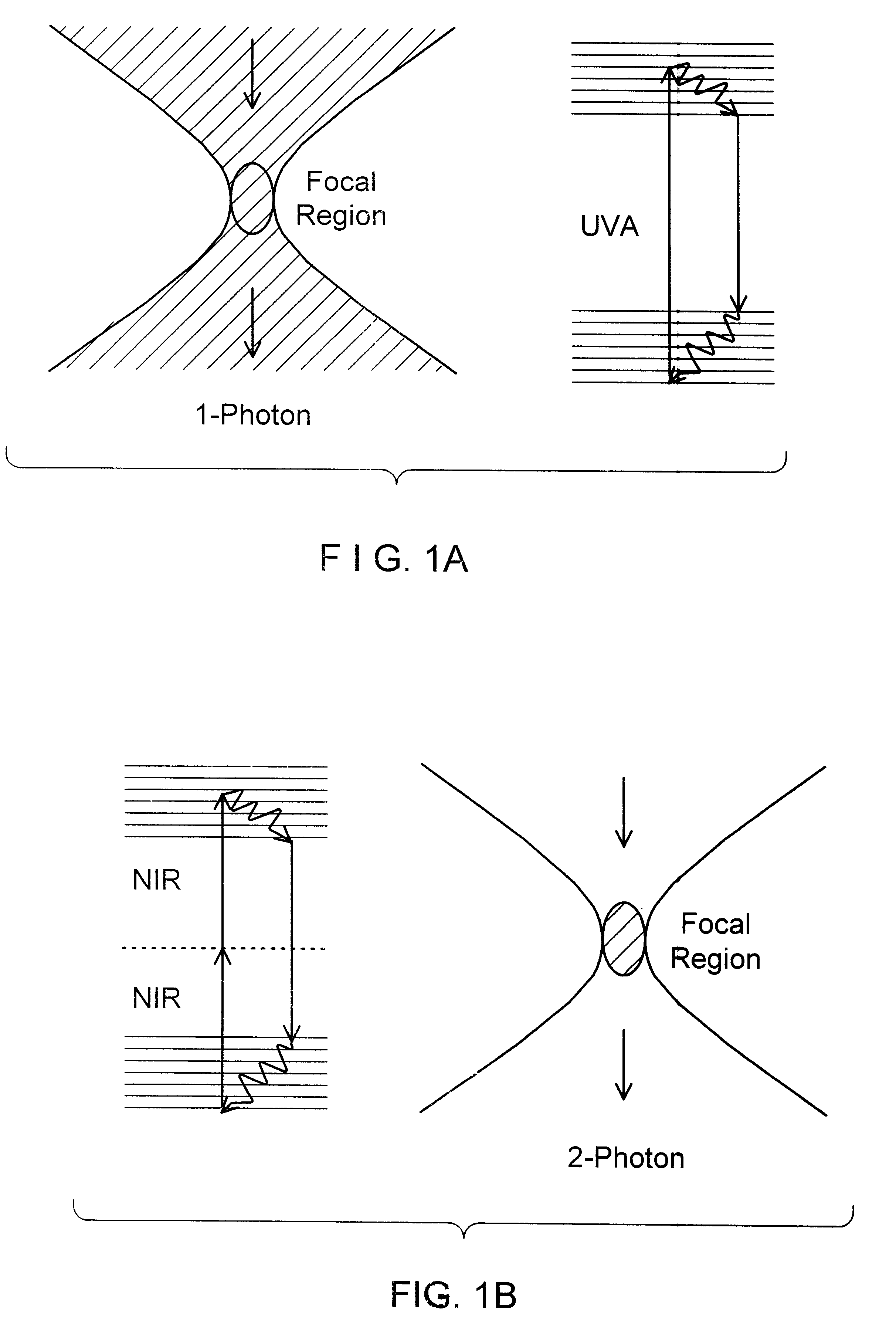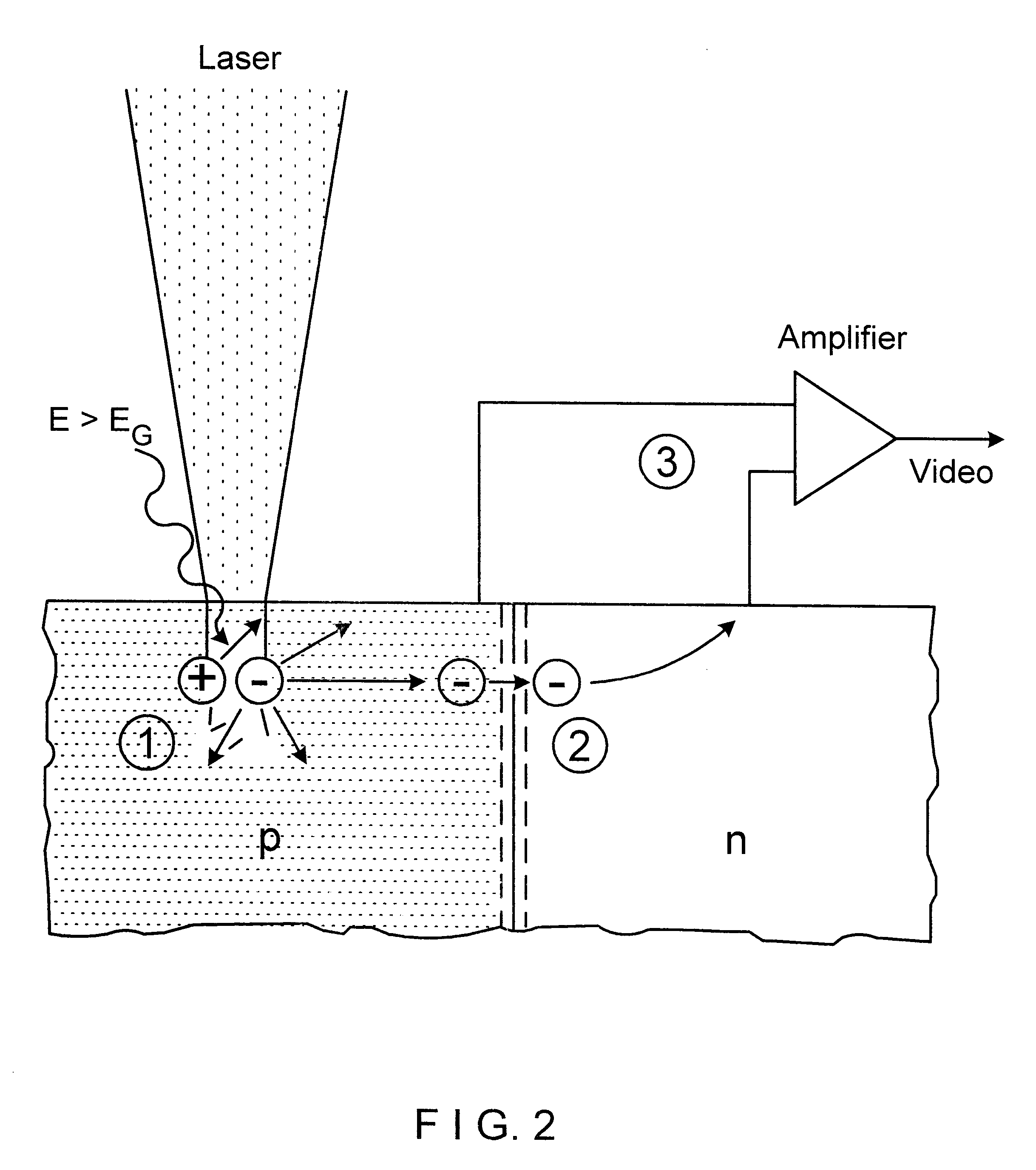Three dimensional optical beam induced current (3-D-OBIC)
- Summary
- Abstract
- Description
- Claims
- Application Information
AI Technical Summary
Benefits of technology
Problems solved by technology
Method used
Image
Examples
Embodiment Construction
FIG. 1a shows the propagation of the laser beam which is focussed by means of a high-aperture microscope objective. In the case of single-photon excitation, excitation results along the entire laser beam cone. However, by using a confocal aperture, the light coming from the focus can be discriminated relative to the extra-focal light.
FIG. 1b shows the propagation of the laser beam focussed by means of a high-aperture microscope objective. In the case of two-photon excitation, [excitation] results only in the region of highest intensity, i.e., in the laser beam focus. This technique is accordingly also depth-discriminating without the use of a confocal aperture.
FIG. 2 If the band gap energy E.sub.G is less than the photon energy E of the incident light, electron hole pairs occur in a semiconductor (1). They recombine very quickly, in general, in the homogeneous semiconductor. When this takes place in the vicinity of a blocked p-n junction, the separation of the holes and electrons ta...
PUM
 Login to View More
Login to View More Abstract
Description
Claims
Application Information
 Login to View More
Login to View More - R&D
- Intellectual Property
- Life Sciences
- Materials
- Tech Scout
- Unparalleled Data Quality
- Higher Quality Content
- 60% Fewer Hallucinations
Browse by: Latest US Patents, China's latest patents, Technical Efficacy Thesaurus, Application Domain, Technology Topic, Popular Technical Reports.
© 2025 PatSnap. All rights reserved.Legal|Privacy policy|Modern Slavery Act Transparency Statement|Sitemap|About US| Contact US: help@patsnap.com



